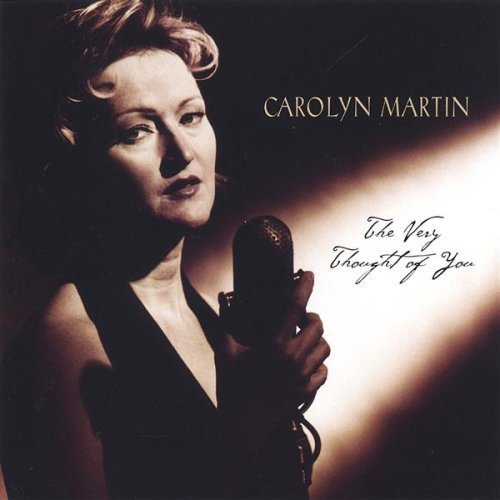Esa-Pekka Salonen - LA Variations (2014) Hi-Res

Artist: Esa-Pekka Salonen
Title: LA Variations
Year Of Release: 2014
Label: Sony Classical
Genre: Classical
Quality: FLAC 24bit-44.1kHz / FLAC (tracks) / Mp3 320 kbps
Total Time: 01:14:34
Total Size: 596 Mb / 339 Mb / 190 Mb
WebSite: Album Preview
Tracklist: Title: LA Variations
Year Of Release: 2014
Label: Sony Classical
Genre: Classical
Quality: FLAC 24bit-44.1kHz / FLAC (tracks) / Mp3 320 kbps
Total Time: 01:14:34
Total Size: 596 Mb / 339 Mb / 190 Mb
WebSite: Album Preview
1. LA Variations 20:06
Five Images After Sappho
2. 1. Tell Everyone 2:06
3. 2. Without Warning 2:33
4. 3. It's No Use 2:17
5. 4. The Evening Star 3:04
6. 5. Wedding 7:55
7. Giro, For Orchestra 10:10
8. Mania For Violoncello And Ensemble 17:01
9. Gambit, For Orchestra 9:00
Performers:
London Sinfonietta (tracks: 2 to 6, 8)
Los Angeles Philharmonic (tracks: 1, 7, 9)
Cello – Anssi Karttunen (tracks: 8)
Soprano Vocals – Dawn Upshaw (tracks: 2 to 6)
Composed By – Esa-Pekka Salonen
Conductor – Esa-Pekka Salonen
Esa-Pekka Salonen composed LA Variations in 1996 on commission from the Los Angeles Philharmonic, with a dedication to Ernest Fleischmann, then Executive Vice President and Managing Director of the Los Angeles Philharmonic Association. Salonen and the Philharmonic premiered the piece in January 1997 at subscription concerts at the Music Center and have since performed it in New York (May 1997), at the Hollywood Bowl (August 1998), and on their subsequent European tour that August and September, in London, Brussels, Lucerne, Cologne, and Frankfurt. The work was performed on a special Green Umbrella concert at UCLA’s Royce Hall in January 2000, and in 2003 it was encored at the Hollywood Bowl prior to an Edinburgh Festival concert and the second of three Opening Galas for the new Walt Disney Concert Hall. At each performance, audience reaction has been extremely enthusiastic, beginning with standing ovations at the Los Angeles premiere. Press comments have been consistently favorable, e.g., “It is music of immediate appeal and relevance that doesn’t need to overthrow Minimalism to get there. This is an important step in musical culture at the end of the century…” (Los Angeles Times). “Intoxicatingly varied and imaginative…lots of humor.” (USA Today). “Splashy and stylish debut, calculated to impress.” (Newsday). “This Dionysian hymn to the orchestra is a work of pure enjoyment of sonority, elaborated by a mind as free as it is rigorous. The seductiveness and dynamism of this music have an immediate effect, and are clad in a language whose originality is far above scholastic squabbles.” (Le Soir).
The composer has provided the following note:
LA Variations is essentially variations on two chords, each consisting of six notes. Together they cover all twelve notes of a chromatic scale. Therefore the basic material of LA Variations has an ambiguous character: sometimes (most of the time, actually) it is modal (hexatonic), sometimes chromatic, when the two hexachords are used together as a twelve-tone structure.
This ambiguity, combining serial and non-serial thinking, is characteristic of all my work since the mid-eighties, but LA Variations tilts the balance drastically towards the non-serial.
This piece, some nineteen minutes of music scored for a large orchestra, including a contrabass clarinet and a synthesizer, is very clear in its form and direct in its expression.
The two hexachords are introduced in the opening measures of the piece together in the chromatic phenotype. Alto flute, English horn, bass clarinet, and two bassoons, shadowed by three solo violas, play a melody which sounds like a kind of synthetic folk music, but in fact is a horizontal representation of the two hexachords transposed to the same pitch.
Some of the variations that follow are based on this melody, others are the deeper, invisible (or inaudible) aspects of the material. There are also elements that never change, like the dactyl rhythm first heard in the timpani and percussion halfway through the piece.
The composer has provided the following note:
LA Variations is essentially variations on two chords, each consisting of six notes. Together they cover all twelve notes of a chromatic scale. Therefore the basic material of LA Variations has an ambiguous character: sometimes (most of the time, actually) it is modal (hexatonic), sometimes chromatic, when the two hexachords are used together as a twelve-tone structure.
This ambiguity, combining serial and non-serial thinking, is characteristic of all my work since the mid-eighties, but LA Variations tilts the balance drastically towards the non-serial.
This piece, some nineteen minutes of music scored for a large orchestra, including a contrabass clarinet and a synthesizer, is very clear in its form and direct in its expression.
The two hexachords are introduced in the opening measures of the piece together in the chromatic phenotype. Alto flute, English horn, bass clarinet, and two bassoons, shadowed by three solo violas, play a melody which sounds like a kind of synthetic folk music, but in fact is a horizontal representation of the two hexachords transposed to the same pitch.
Some of the variations that follow are based on this melody, others are the deeper, invisible (or inaudible) aspects of the material. There are also elements that never change, like the dactyl rhythm first heard in the timpani and percussion halfway through the piece.




![Ben Aylon, Roei Hermon - SMALL ROOM IN DAKAR (2025) [Hi-Res] Ben Aylon, Roei Hermon - SMALL ROOM IN DAKAR (2025) [Hi-Res]](https://www.dibpic.com/uploads/posts/2025-12/1765640683_pl8lfacmwajwc_600.jpg)


![Nigel Price Organ Trio - It's On! (2025) [Hi-Res] Nigel Price Organ Trio - It's On! (2025) [Hi-Res]](https://www.dibpic.com/uploads/posts/2025-12/1765455590_qdrxk5okcm0kb_600.jpg)
![Zbigniew Namyslowski Modern Jazz Quartet - Lola (Remastered 2025) (2025) [Hi-Res] Zbigniew Namyslowski Modern Jazz Quartet - Lola (Remastered 2025) (2025) [Hi-Res]](https://www.dibpic.com/uploads/posts/2025-12/1765509687_cover.jpg)